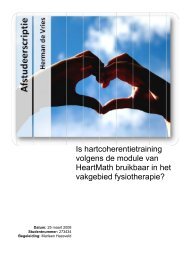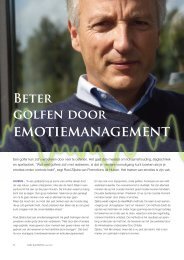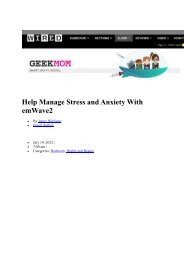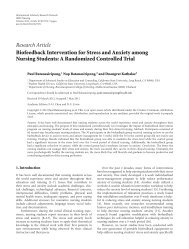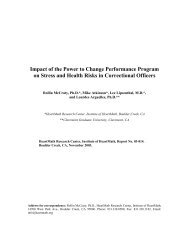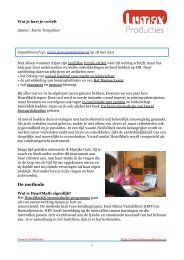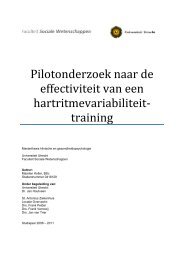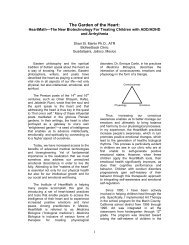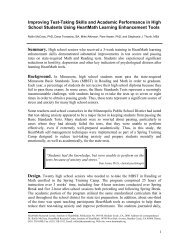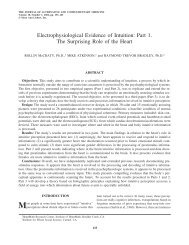Kan Stress verminderen door het toepassen van hartcoherentie
Kan Stress verminderen door het toepassen van hartcoherentie
Kan Stress verminderen door het toepassen van hartcoherentie
Create successful ePaper yourself
Turn your PDF publications into a flip-book with our unique Google optimized e-Paper software.
SUMMARY<br />
In this study the human being is presented as a dynamic system, that functions in continuously<br />
changing circumstances, aiming at balance. Selfregulating capacities can keep the human being in<br />
balance within the boundaries of the state of equilibrium, however when new or ‘threatening’<br />
circumstances have disturbed this situation, new adaptation stategies have to be developed and executed<br />
to find a new balance. This state of imbalance is called ‘stress’ and occurs on low (cellular) as well as high<br />
functional levels (behavior). <strong>Stress</strong> on a higher functional level can be observed by the brain and results<br />
almost directly in the activation of the physiological system to support the development and<br />
implementation of adaptation processes. This physiological support is called ‘arousal’ and has specific<br />
characteristics on the levels of hormones, autonomic nervous system, brainwaves and in mutual<br />
synchronization of the physiological rhythms.<br />
<strong>Stress</strong> can lead to adaptation processes, in which the tuning between the involved parts will end<br />
up in a new state of balance (approach), but it can also result in a chaotic process, moving further from<br />
balance (avoidance). The popular name ‘stress’ (lack of balance during longer time) is related to the<br />
avoidance state and reduction of this ‘stress’ can be reached by a change of state in the direction of<br />
‘approach’.<br />
The approach- or avoidance state influences physiological, physical, emotional, cognitive and<br />
behavioral domains. Because of interconnection between these domains, the change of state can start<br />
within all these separate domains.<br />
In the physiological domain this can be done by increasing the mutual synchronization between<br />
important physiological systems. These systems, including the cardiovascular system of the heart and<br />
bloodcirculation, show in balance a 10 second rhythm. Because of the direct influence of the respiration<br />
on the heartrate, a respiration cycle of about 10 seconds can increase the synchronization in a more<br />
balanced direction (approach state) in heart rate. The increased regularity in the variability of the heartrate<br />
is called ‘heartcoherence’ and is related to the state of approach.<br />
In this study a training is given to use heartcoherence, that is increased by respiration in a 10<br />
second rhythm, to reduce stress. The study aims at investigating the effect of this form of stressreduction<br />
in the field of physiological rhythms, the autonomic nervous system, the brainwaves and the physical,<br />
emotional and cognitive aspects of stress.<br />
Fourteen continuously stressed mothers of ADHD-, PDD-NOS-, autistic and other restless<br />
children took part in the research. All mothers participated in a practical session with the biofeedback<br />
method ‘Freeze Framer’ of the Institute of HeartMath to increase their heartcoherence with the respiration<br />
method in a 10 second rhythm. Adjacent to this practical session the experimental group got 4<br />
trainingsessions with explanation about stressprocesses and awareness of the possibilities and motivation<br />
to implement heartcoherence in stressfull situations at home. The mothers have been asked to practice<br />
the respiration method during five times a day for half a minute to automatize the process.<br />
2



